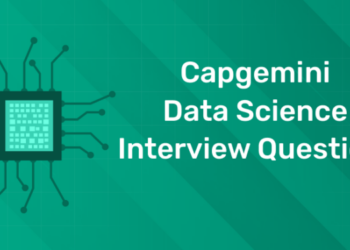Table of Contents
What is Agile?
Agile is an iterative approach to project management and software development that enables teams to provide value to clients more quickly and with fewer difficulties. An agile team provides work in small, yet consumable, increments rather than putting all on a “big bang” launch. Continuous evaluation of requirements, plans, and results provides teams with a natural mechanism for adjusting rapidly to change.The capacity to produce and adapt to change is referred to as agility. It is a method of coping with and eventually succeeding in, an unpredictable and tumultuous environment. The creators of the Agile Manifesto picked the term
“Agile” to signify the adaptability and responsiveness to change that was so vital to their methodology. It’s basically about figuring out how to grasp what’s going on in your current environment, identifying the uncertainty you’re experiencing, and figuring out how to adjust to it as you go. Agile isn’t characterized by a collection of rituals or a set of development processes. Agile is, rather, a collection of approaches that indicate a dedication to short feedback cycles and continuous improvement.
What is Agile Software Development?
Agile software development encompasses more than just frameworks like Scrum, Extreme Programming, and Feature-Driven Development (FDD). Pair programming, test-driven development, stand-ups, planning meetings, and sprints are all examples of agile software development approaches. The phrase “agile software development” refers to a collection of concepts and techniques based on the ideals and ideas articulated in the Manifesto for Agile Software Development and the 12 Principles that underpin it.
When approaching software development in a certain way, it’s typically a good idea to live by these values and principles and utilize them to assist figure out what to do given your specific situation. One feature that distinguishes Agile from other methods of software development is the emphasis on the people performing the job and how they collaborate. Collaboration amongst self-organizing cross-functional teams using suitable approaches for their context leads to the development of solutions.
Learn Coding in your Language! Enroll Here!
The Agile software development community places a high value on cooperation and the self-organizing team. That is not to say that there are no managers. It means that teams can decide how they’re going to address problems on their own. That these teams are cross-functional. Those teams do not need to have particular duties, but rather that when you put the team together, you ensure that you have all of the necessary skill sets. Managers are still in demand. Managers ensure that team members have or acquire the necessary skill sets.
Managers create an atmosphere that allows the team to succeed. Managers typically stand aside and allow their teams to figure out how to provide things, but they step in when the teams attempt but fail. When most teams and companies begin using Agile development, they focus on methods that aid in communication and task organization, which is wonderful. Specific technical practices that directly deal with designing software in a way that helps your team cope with uncertainty are another crucial set of practices that are not as commonly followed but should be. Those technological procedures are critical and should not be overlooked.
Power up your career with Entri Elevate – Full Stack Development Course!
The Agile software development cycle
The Agile software development cycle has six steps: concept, inception, iteration/construction, release, production, and retirement. The first phase, idea, entails identifying commercial prospects in each possible project as well as estimating the time and effort needed to finish the project. This data may then be used to rank projects and determine which ones are viable in terms of both technical and economic feasibility. During the second phase, inception, team members are chosen, money is provided, and the customer’s first requirements are addressed. A timeline that explains the different roles of teams and clearly states when work is anticipated to be finished for each sprint should also be prepared. A sprint is a type of set.
Iteration/construction is the third stage, in which teams begin developing functioning software based on requirements and continual feedback. The Agile software development cycle is based on iterations, or single development cycles, which build on one another and lead into the next stage of the broader development process until the project is done. Each iteration usually lasts two to four weeks and has a predetermined finish date. At the conclusion of each iteration, the aim is to have a functional product to launch.
Several iterations occur during the development cycle, each with its unique methodology. A typical iteration flow is as follows:
- defining requirements based on the product backlog, sprint backlog, and customer and stakeholder feedback;
- developing software based on the set requirements;
- conducting quality assurance testing, internal and external training, and documentation;
- delivering and integrating the working product into production; and
- gathering customer and stakeholder feedback on the iteration in order to define new requirements for the next sprint.
The fourth phase, release, entails final quality assurance testing, defect resolution, finalization of the system and user documentation, and, finally, the deployment of the final iteration into production. Following the release, the fifth stage, production, focuses on the continuing maintenance required to keep the software running. The development teams must ensure that the program runs properly while also teaching consumers how to utilize it correctly. The manufacturing phase lasts until support is terminated or the product is scheduled for retirement. The final step, retirement, includes all end-of-life activities such as customer notification and final migration. The system release must be taken out of production. This is frequently done when a system has to be replaced by a new version or when the system becomes obsolete.
Various items can be added to the product backlog during the Agile cycle, but the overall process should consist of repeating each phase until every item on the backlog has been fulfilled. As a result, the Agile cycle becomes a loop rather than a linear process. An organization might have numerous projects running at the same time, with iterations on different product lines and a range of internal and external clients supplying diverse business demands.
What are Agile Methodologies?
What does the notion of Agile techniques mean if Agile is a mindset? To address this question, you may find a clear description of the methodology useful. A methodology, according to Alistair Cockburn, is a set of norms that a team decides to follow. That implies that each team will have its own methodology, which will differ in tiny or big ways from the methodologies of the other teams. As a result, Agile techniques are the conventions that a team decides to follow in order to adhere to Agile ideals and principles. “Wait, I thought Scrum and XP were Agile approaches,” you’re presumably thinking. Alistair used the term framework to describe such ideas. They were undoubtedly created from the approach of a particular team, but they became frameworks when they were generalized to be utilized by other teams. These frameworks can assist a team to decide where to begin with their methodology, but they should not be the team’s approach. To fit well in its environment, the team will constantly need to change its use of a framework.
Learn Coding in your Language! Enroll Here!
What about Agile Project Management or Agile Business Analysis?
As Agile Software Development grew increasingly prominent, people who were involved in software development activities but did not actively build software sought to understand how these Agile concepts related to their field of work. A group of software engineers (and a tester) wrote the Agile Manifesto and the 12 Principles to solve challenges that software developers encountered. When you conceive of Agile as a mentality, you can apply that approach to different tasks. Agile becomes an adjective as a result of this. It defines how you go about doing something. For the reasons stated above, it does not develop a new approach.
What is Business Agility?
The two notions mentioned above are instances of Agile being applied “outside of software.” These initiatives have culminated in the Business Agility movement. People pursuing Business Agility question themselves, “How may we build and manage our business in a way that allows us to generate and adapt to change while dealing with uncertainty?” Business agility might be defined as the realization that in order for employees in a company to function with an Agile attitude, the entire organization must support that mindset. Agile software development was never truly Agile until the business altered its structure and procedures to accommodate working in an unpredictable environment.
Key Agile Concepts
User Stories: The team breaks the work to be done into functional chunks called “user stories” after consulting with the client or product owner. Each user narrative is meant to add to the overall value of the product.
Daily Meeting: The team meets every day at the same time to bring everyone up to speed on the information that is critical for coordination: each team member quickly summarises any “finished” contributions as well as any difficulties that stand in their way.
Personas: When the project requires it, such as when user experience is an important aspect in project results, the team creates complete, synthetic biographies of fake consumers of the future product, which are referred to as “personas.”
A “team” in the Agile definition is a small group of people who are all assigned to the same project or endeavor full-time. A small percentage of team members may work part-time or have competing obligations.
Incremental Development: Almost all Agile teams choose an incremental development agile model in software engineering, which implies that each consecutive version of the product is useable and improves on the preceding version by adding user-visible features. Agile projects are iterative in the sense that they allow for “repeating” software development activities and even “revisiting” the same work outputs.
Milestone Retrospective: After a project has been running for a while, or at the end of the project, all permanent members of the team (not just the developers) devote one to three days to a comprehensive review of the project’s important events.
Power up your career with Entri Elevate – Full Stack Development Course!
Advantages and disadvantages of Agile
Many comparisons have been made throughout the years between Agile and Waterfall techniques. During the Waterfall era of software development, coders worked alone with little to no input before passing the software on to testers and eventually to production. Bugs, issues, and feature revisions were either poorly managed or dealt with so late in the process that projects were severely delayed or even canceled. The agile model in software engineering concept of keeping everyone involved and informed in the development process, including the business side, signified a significant shift in both organizational culture and the capacity to bring better software to market more rapidly. Because the Agile Manifesto leaves room for interpretation, Agile has been changed and adjusted to accommodate businesses of many sizes and types. The Agile culture change also cleared the way for DevOps, the most recent software development evolution.
On the other hand, many would argue that the most significant downside of Agile is that it has been adapted – some would say diluted – by several firms. This problem is so common that practitioners of “Agile my way” is renowned. Although Agile facilitates communication between developers and the business side, it has been less effective in including testing and operations into the mix – an omission that may have aided the concept of DevOps. Another possible difficulty with Agile is its lack of emphasis on technology, which might make it difficult to sell the concept to senior management who don’t understand the importance of culture in software development. Furthermore, the pressure to complete sprints on time might make working as a software developer stressful. To achieve deadlines, they may be required to work longer hours and remain late.
If you are interested to learn new coding skills, the Entri app will help you to acquire them very easily. Entri app is following a structural study plan so that the students can learn very easily. If you don’t have a coding background, it won’t be a problem. You can download the Entri app from the google play store and enroll in your favorite course.











